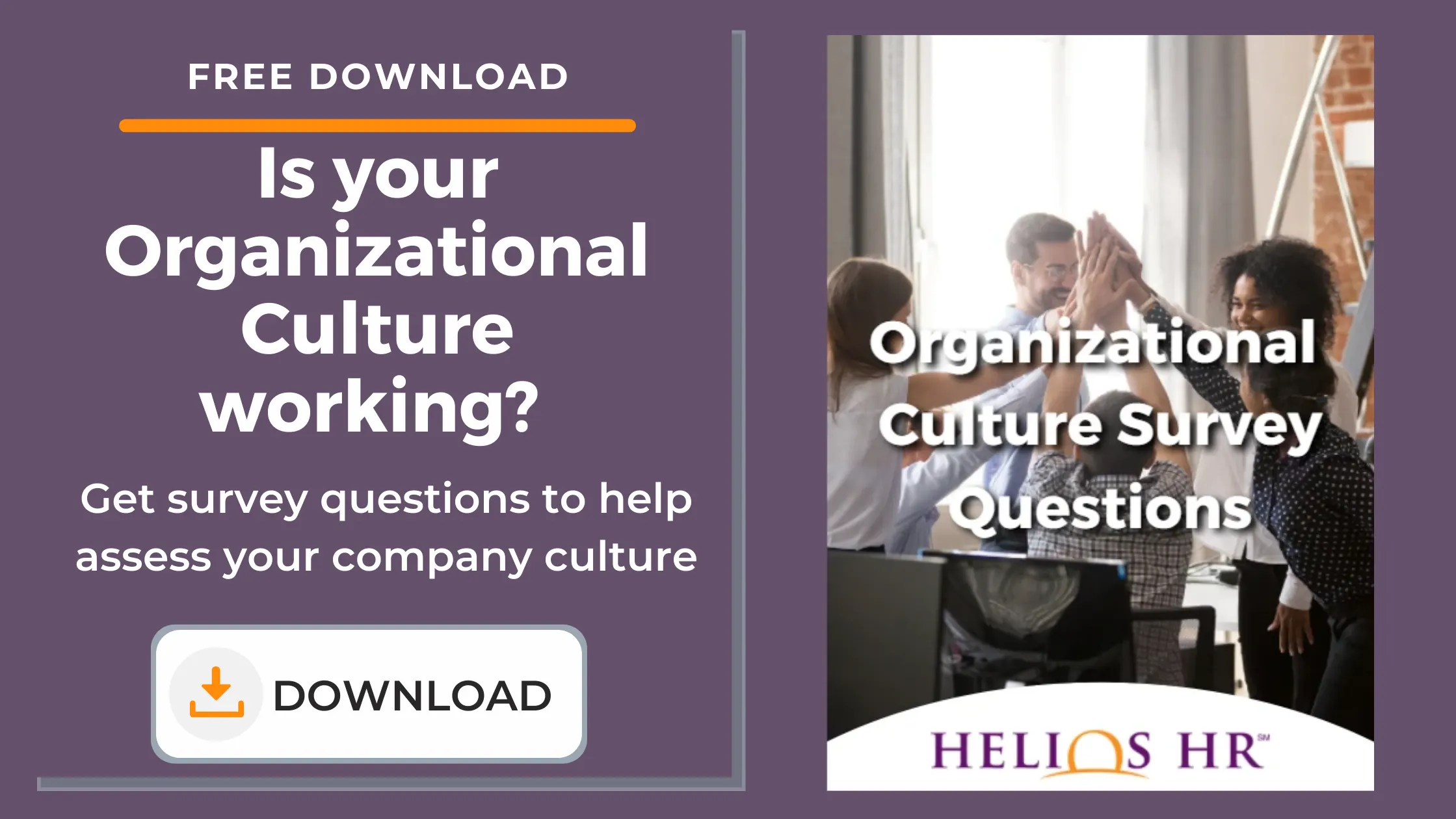By: Ber Leary on October 30th, 2021
5 Recent Trends That Are Changing Organizational Culture Forever
In normal circumstances, organizational culture tends to be steady and stable. Cultural changes are an evolutionary process, often unfolding over several years, with a change management project structure to guide things along.
But sometimes, an unforeseen event will hit your culture like a bolt of lightning, and everything will change overnight. COVID-19 was a thunderstorm that struck the whole world, causing such radical change that we began to think of post-pandemic life as "The New Normal".
Many leaders had hoped that the old normal might one day return. However, as we move into the fourth year of the pandemic, it’s become clear that some things have changed forever.
How is the New Normal Changing Organizational Culture?
COVID's biggest impact on organizational culture happened in early 2020, when teams had to switch to remote work almost overnight. Most experts anticipated that this would be temporary, and that everyone would eventually return to the office full-time.
But that didn’t quite happen. Workers everywhere found that their perception of work had changed, and they weren’t happy to settle for the same old same old. This led to The Great Resignation, as employees in all industries decided they would rather quit than work in a culture that didn’t suit them.
All in all, these social trends have had some permanent effects on company culture.
1. Working in the office is no longer a default
Before the pandemic, only 17% of employers allowed people to work fully remote, while almost half of companies had no remote working option at all. Those stats have flipped in recent months, with 44% of companies now offering full-time remote positions, and a further 23% offering a hybrid schedule.
What it means for changing organizational culture: Traditionally, companies have assumed that all employees will regularly gather in a single physical office. This makes it easy to hold meetings, plan events, or just casually chat to people in the hallway. These interactions are the main drivers of your organizational culture.
But now, you have to think about hybrid teams and fully remote workers. How do people connect when they’re not in the office? Will remote workers miss out on key conversations? Will you develop distinct cultures for in-office and remote staff? These are the questions with which employers struggle.
Related Reading: How to Build a Strong Culture with a Remote Team
2. A healthy work-life balance is now as important as salary
Americans have always been hard workers, clocking in an average of over 1,750 hours per year, which is higher than the OECD average. This was never sustainable, especially considering that two-thirds of workers were experiencing burnout before the pandemic. COVID-19 has caused many to rethink their priorities, with many employees now willing to choose a healthy work-life balance over a great salary.
What it means for changing organizational culture: Right now, employees are not content to trade their well-being for a great salary. After spending more time at home during the pandemic—and sometimes watching loved ones lose their lives to illness—many people realize that they need to focus on their family and overall quality of life. This shift in attitude was a major driver of The Great Resignation.
Overall, this should mean that fewer companies promote a high-pressure, results-focused culture. Instead, employers will look to provide an environment that’s safe and sustainable, with lower rates of employee burnout.
3. Adaptability is required for an ever-changing organizational culture
Some teams have a low tolerance for error – think of compliance teams, for instance. In this environment, the culture values qualities such as accuracy, reliability and attention to detail. But the pandemic has shown us that everyone must be able to adapt to changing circumstances. Ongoing challenges like digital transformation make it even more important to be flexible.
What it means for changing organizational culture: Employers are trying to make all of their teams more dynamic so that they can be ready for the next pandemic, or any other major disruption. As a result, recruiters are focusing on candidates with soft skills like adaptability, flexibility, willingness to learn, and critical thinking.
As well as making organizational culture more dynamic, it will also cause many teams to become more collaborative. Dealing with a crisis requires an enormous deal of communication. Siloed cultures are already crashing down as teams get better at supporting each other through change.
4. Mental health awareness is now a core competency
Before the pandemic, many leaders felt that employee mental health was not a work-related issue. Companies provided Employee Assistance Programs (EAPs), but it was largely up to the individual to manage their own mental well-being. Since the pandemic, the number of people quitting for mental health reasons has leaped from 34% to 50%, making it something that managers can no longer ignore.
What it means for changing organizational culture: Post-pandemic leaders must take an interest in employee mental health, and must understand how culture can affect their people. Work-related mental health issues often boil down to one of two things: stress from overwork, or discrimination and harassment by colleagues. Both of these stressors are prevalent in a toxic culture.
If your company wants to engage and retain great people, it needs a culture that supports those people. That could mean some difficult conversations, as employers tackle the structural issues that directly contribute to a toxic or hostile culture.
5. Honesty is still the best policy
Employees need to trust their boss – especially when the stakes are high. During a crisis like the pandemic, trust is literally a matter of life or death. And yet one in three workers report that they don't trust their employers. It's a big concern for the 55% of CEOs who say that lack of trust is an obstacle to long-term growth.
What it means for changing organizational culture: During the chaos of the pandemic, employees learned to appreciate a boss who is open and honest, even when the news was bad. This experience has changed expectations for a lot of people, and open communication is now a must-have quality in any culture.
Things were already trending this way before the pandemic. Gen Z workers prefer non-hierarchical structures, which means that they want a manager who communicates openly. Honesty has always been the best policy, but now it's the only policy.
Related Reading: How to Build a Thriving Organizational Culture
Even a changing organizational culture is all about the fundamentals
Why did the pandemic cause such a radical change in organizational culture?
Because the pandemic exposed a lot of deep-rooted problems within organizations. Companies struggled if they had low engagement, or weren't flexible enough, or if the employer-employee relationship wasn't strong enough.
Organizational culture is all about the fundamentals. If you want a thriving culture, you need a great HR team in place who can build a safe, supportive environment for all of your employees.
Need some help building that environment? Book a no-obligation consultation call with Helios HR today, and find out how you can build a culture that thrives in any circumstances.





